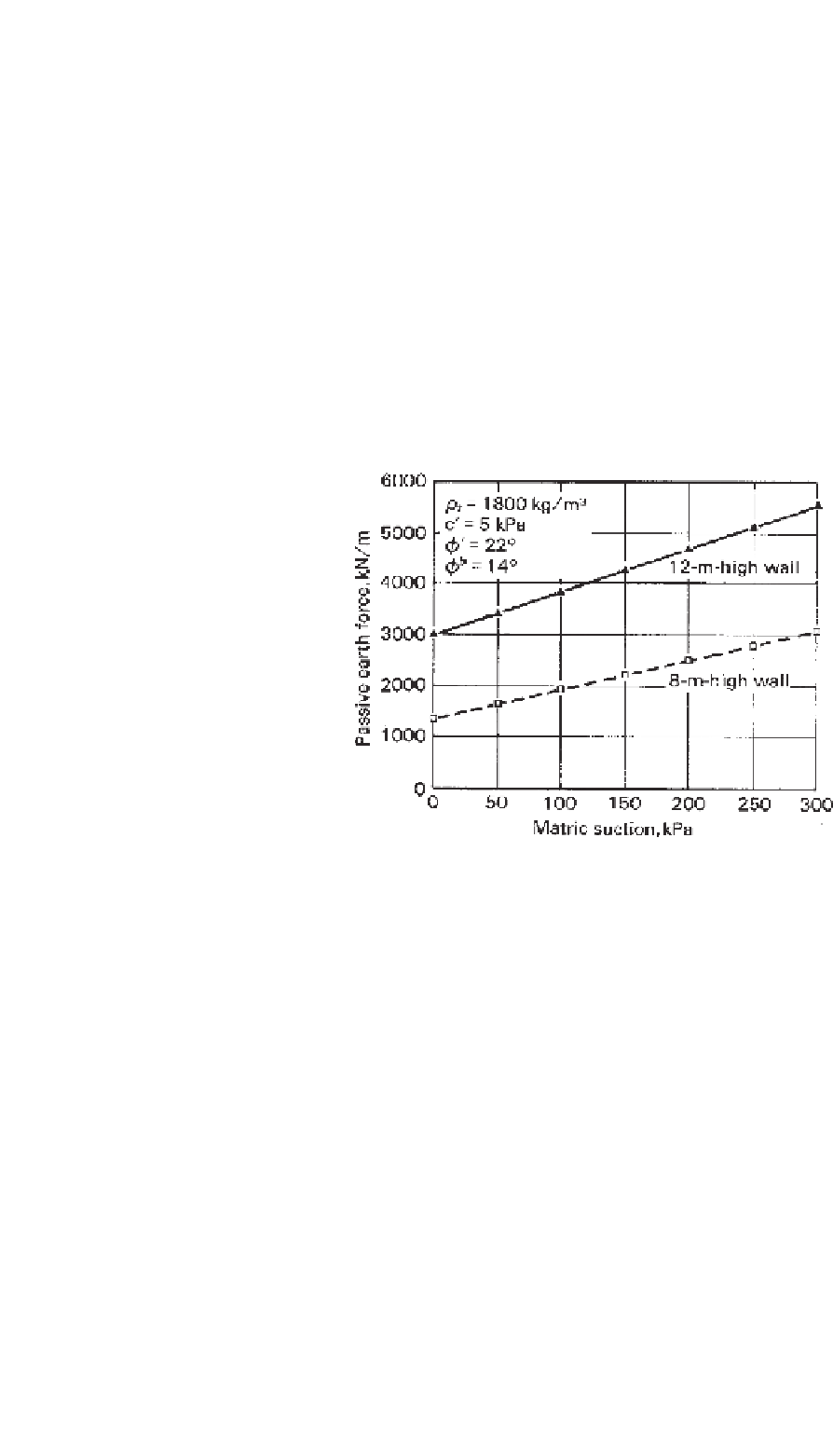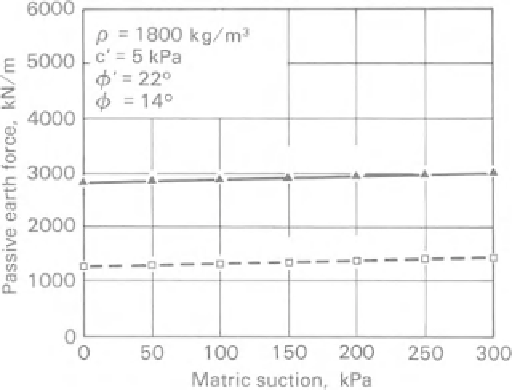Environmental Engineering Reference
In-Depth Information
12.3.16 Passive Earth Force
The passive earth force
P
p
against a smooth wall is equal to
the passive pressure integrated over the depth under consid-
eration. Equation 12.53 can be integrated over its entire depth
when the matric suction is constant with respect to depth:
Tension cracks are assumed to close for the passive earth
force case. Equations 12.61 and 12.62 can be solved using
typical soil properties to illustrate the effect of matric suction
on the passive earth force.
The soil properties and wall dimensions used to illustrate
the variation in active earth force with matric suction are
again used to compute the passive earth force. Figure 12.58
shows the passive earth force for the case of constant matric
suction with respect to depth. The passive earth force is
shown to increase significantly as the matric suction of
the soil increases. The point of application of the resultant
force can be computed using the line of action of the force
associated with each component of the passive earth pressure
diagram.
Figure 12.59 shows the passive earth force developed
against a smooth wall when the suction decreases linearly
with depth. The water table is 1m below the bottom of the
u
w
)
tan
φ
b
N
φ
H
(12.61)
If the matric suction decreases linearly with respect to
depth in a hydrostatic manner, Eq. 12.61 can be integrated
with respect to depth to get the total passive force:
2
c
N
φ
H
ρgN
φ
H
2
2
P
p
=
+
+
2
(u
a
−
2
c
N
φ
H
ρgN
φ
H
2
2
P
p
=
+
u
w
)
h
tan
φ
b
N
φ
H
H
2
2
D
+
2
(u
a
−
−
(12.62)
Figure 12.58
Passive earth force when matric suction is constant with respect to depth and
other variables are as designated.
t
c
b
12-m-high wall
8-m-high wall
Figure 12.59
Passive earth force when matric suction decreases linearly to a water table that
is 1m below base of wall.













Search WWH ::

Custom Search